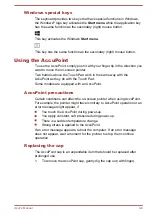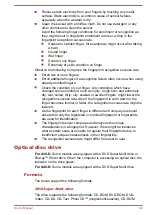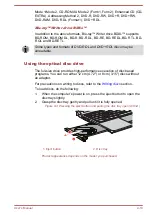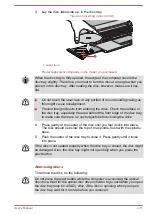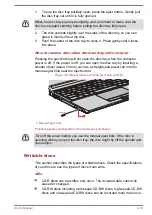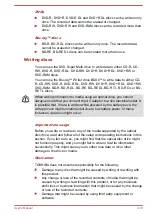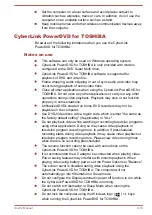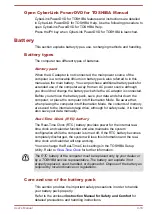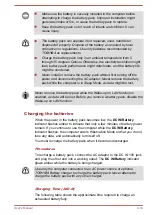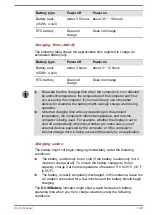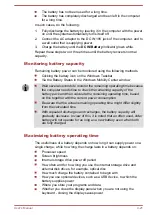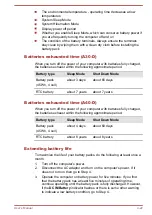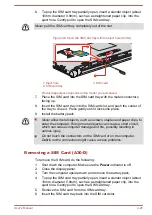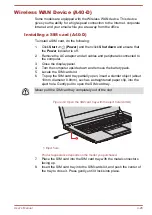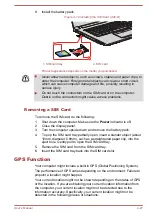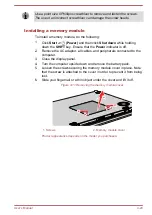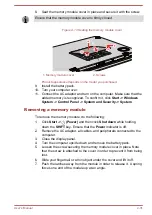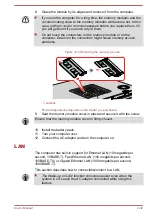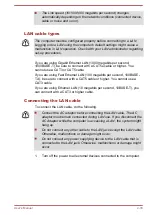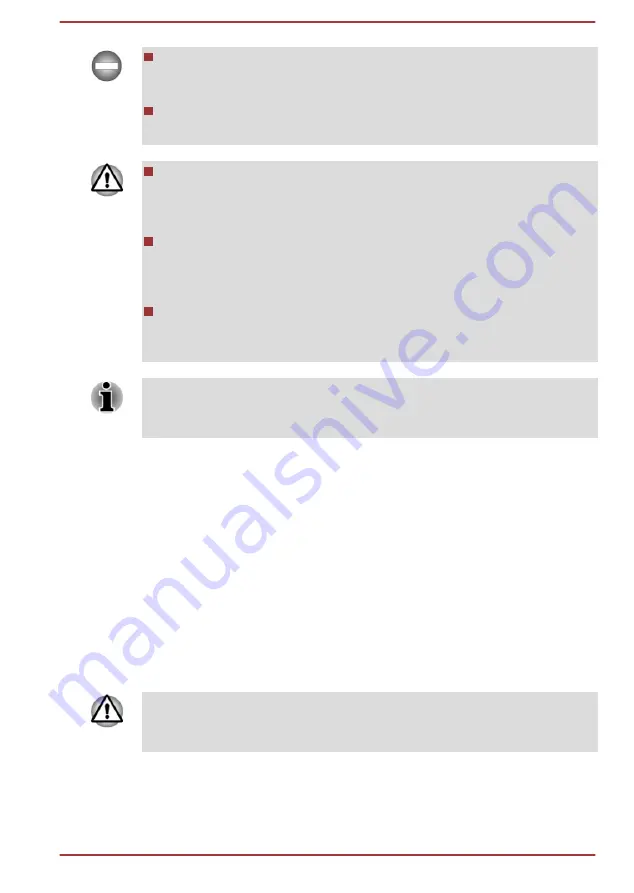
Make sure the battery is securely installed in the computer before
attempting to charge the battery pack. Improper installation might
generate smoke or fire, or cause the battery pack to rupture.
Keep the battery pack out of reach of infants and children. It can
cause injury.
The battery pack can explode if not replaced, used, handled or
disposed of properly. Dispose of the battery as required by local
ordinances or regulations. Use only batteries recommended by
TOSHIBA as replacements.
Charge the battery pack only in an ambient temperature from 5
through 35 degrees Celsius. Otherwise, the electrolyte solution might
leak, battery pack performance might deteriorate, and the battery life
might be shortened.
Never install or remove the battery pack without first turning off the
power and disconnecting the AC adaptor. Never remove the battery
pack while the computer is in Sleep Mode, as data might be lost.
Never remove the battery pack while the Wake-up on LAN function is
enabled, as data will be lost. Before you remove a battery pack, disable the
Wake-up on LAN function.
Charging the batteries
When the power in the battery pack becomes low, the
DC IN/Battery
indicator flashes amber to indicate that only a few minutes of battery power
remain. If you continue to use the computer while the
DC IN/Battery
indicator flashes, the computer enters Hibernation Mode so that you do not
lose any data, and automatically turn itself off.
You must recharge the battery pack when it becomes discharged.
Procedures
To recharge a battery pack, connect the AC adaptor to the DC IN 19V jack
and plug the other end into a working outlet. The
DC IN/Battery
indicator
glows amber while the battery is being charged.
Use only the computer connected to an AC power source or optional
TOSHIBA Battery charger to charge the battery pack. Never attempt to
charge the battery pack with any other charger.
Charging Time (A30-D)
The following table shows the approximate time required to charge an
exhausted battery fully.
User's Manual
4-19


